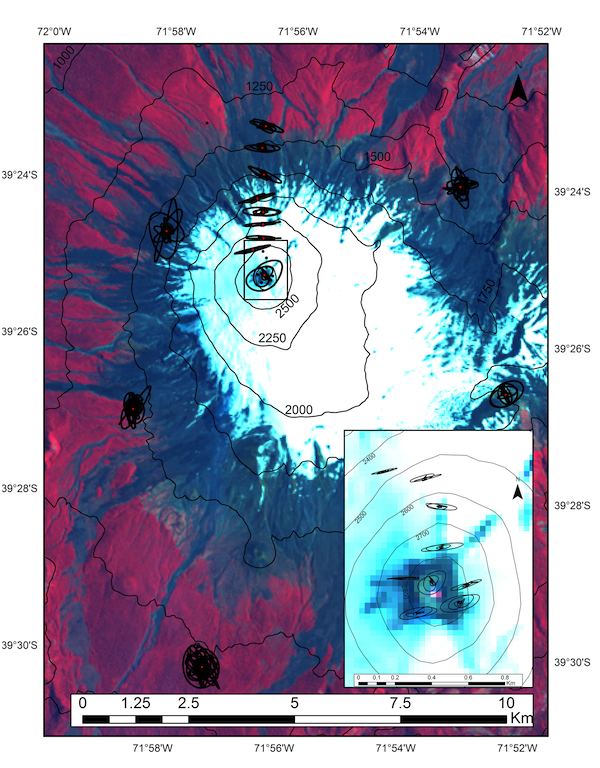2012 IRIS Workshop
Source Inversion of Repetitive Long-Period Seismicity beneath Villarrica Volcano, Chile
Joshua P. Richardson:, Gregory P. Waite: Michigan Technological University
Stacked velocity seismogram particle motions from a repetitive long-period (LP) event recorded from 2010 through 2012 from the flanks of Villarrica Volcano. The particle motions in the larger map have been normalized to the maximum east component amplitude within each station trace to display polarity details at a wide range of distances, and the particle motions within the inset map are scaled equally to the same relative amplitude. Each LP is also associated with a measured acoustic pulse.

Full-resolution graphics file in original format: 0098.tif
The particle motions are uncharacteristic for a slug rising through an axisymmetric cylindrical conduit, so we suggest that slugs or bubbles rising through a shallow dike-like constriction are producing the apparent asymmetry of the seismic source. The highly repetitive nature of the source over three years of observations suggests a semi-permanent feature of the shallow conduit that is independent of short-term variations in eruptive activity or lava lake height. Particle motions are displayed on composite band Landsat imagery from 1984.
Acknoweldgements: This research has been funded by NSF award number 0948526. The instruments used in the field program were provided by the PASSCAL facility of the Incorporated Research Institutions for Seismology (IRIS) through the PASSCAL Instrument Center at New Mexico Tech. The facilities of the IRIS Consortium are supported by the National Science Foundation under Cooperative Agreement EAR-0552316 and by the Department of Energy National Nuclear Security Administration.
Keywords: volcano_seismology
